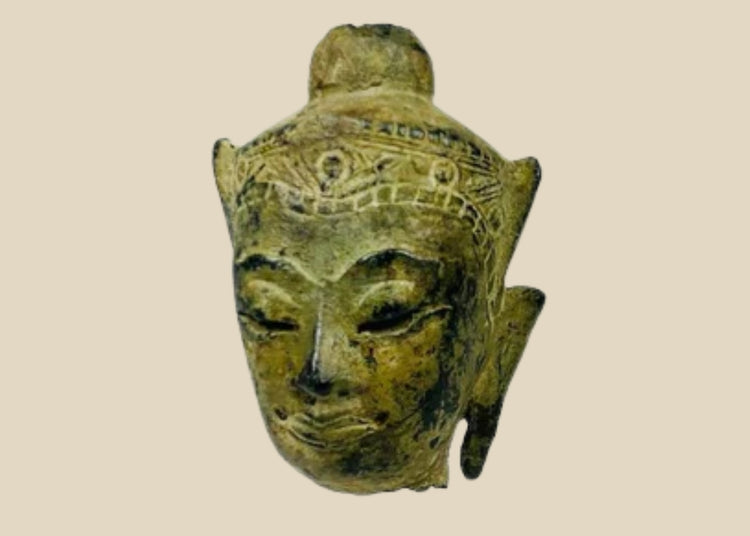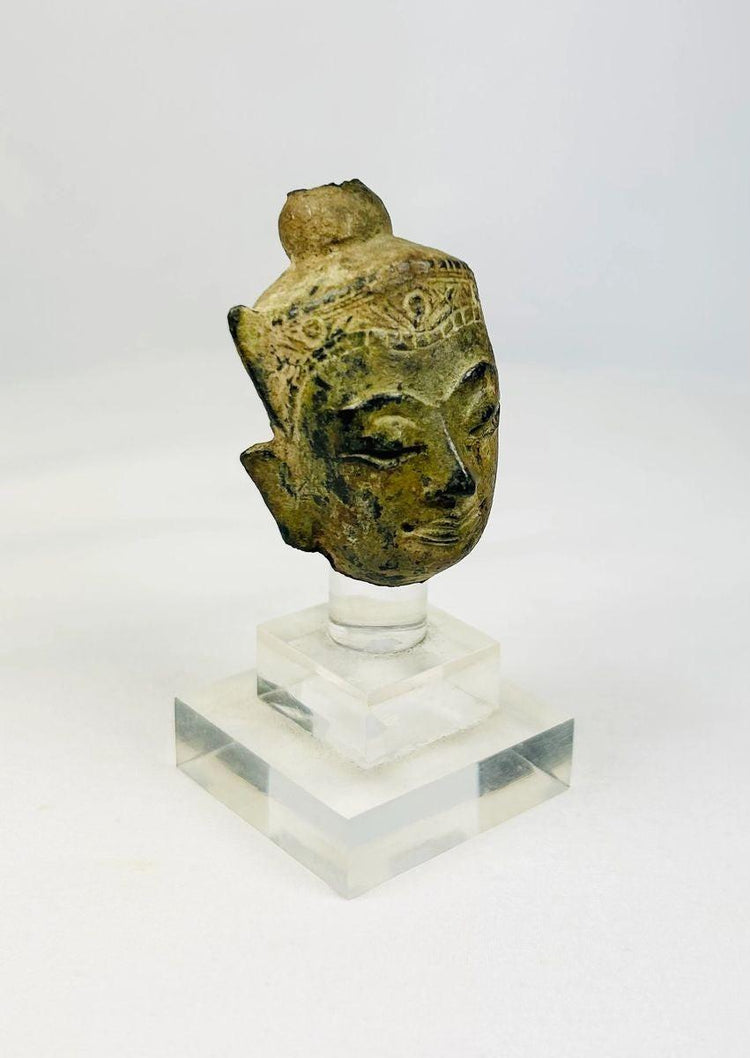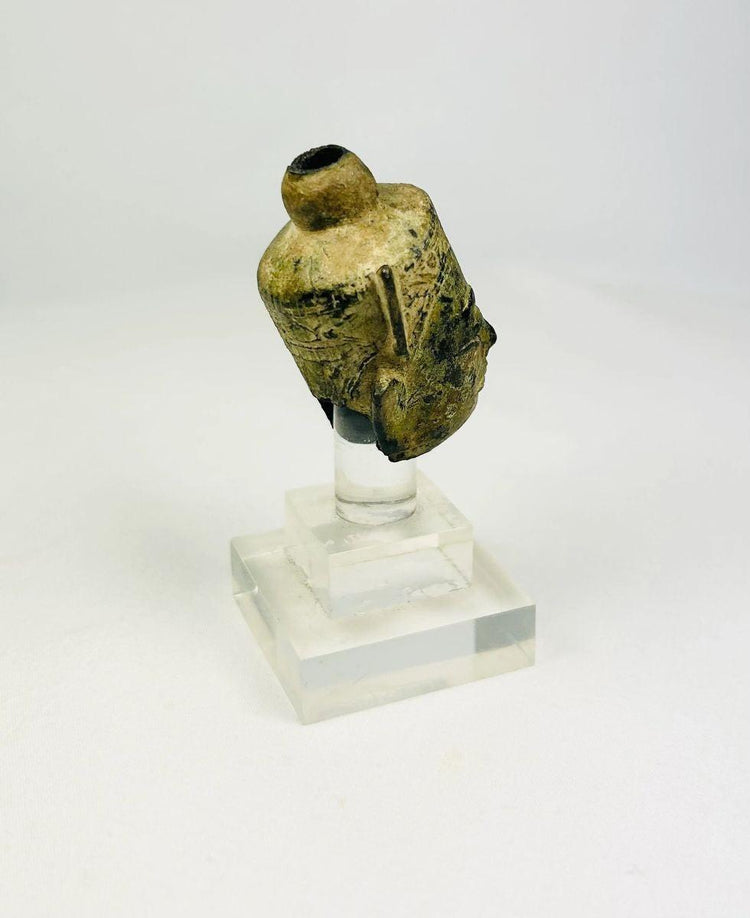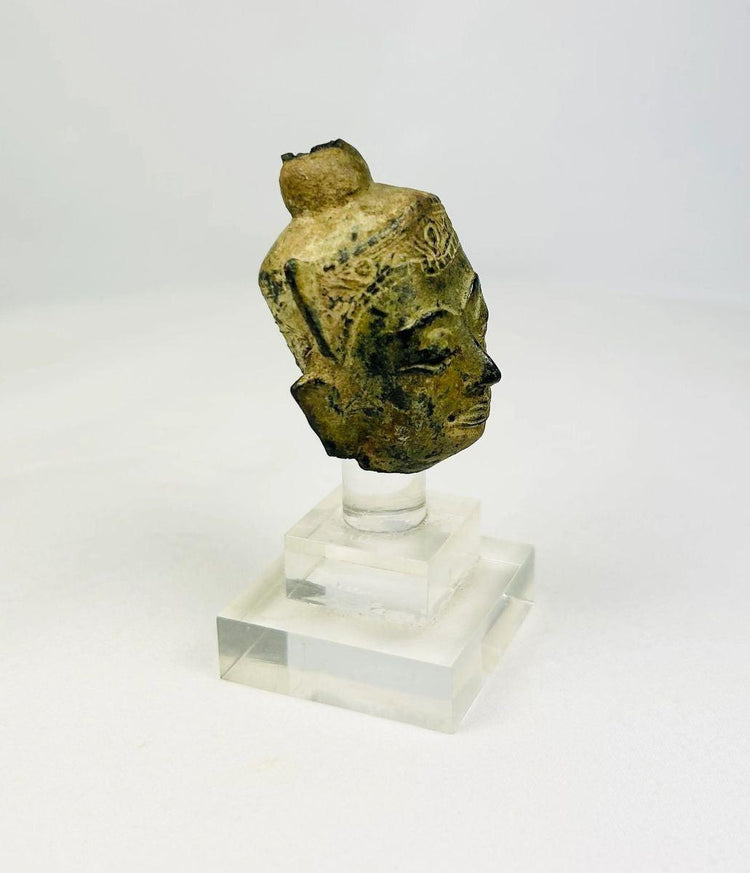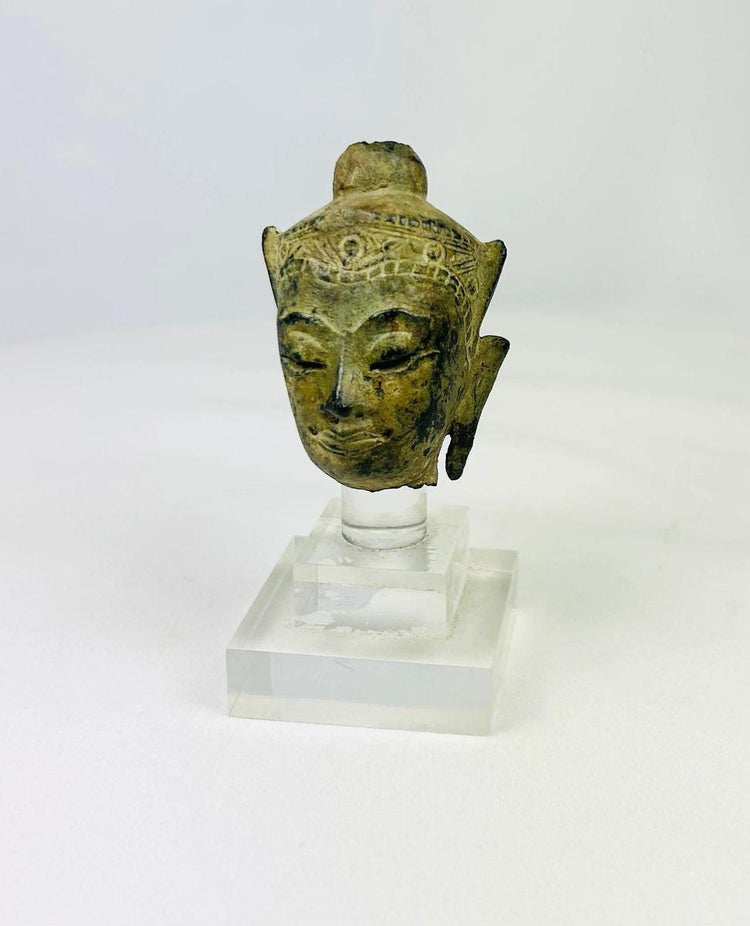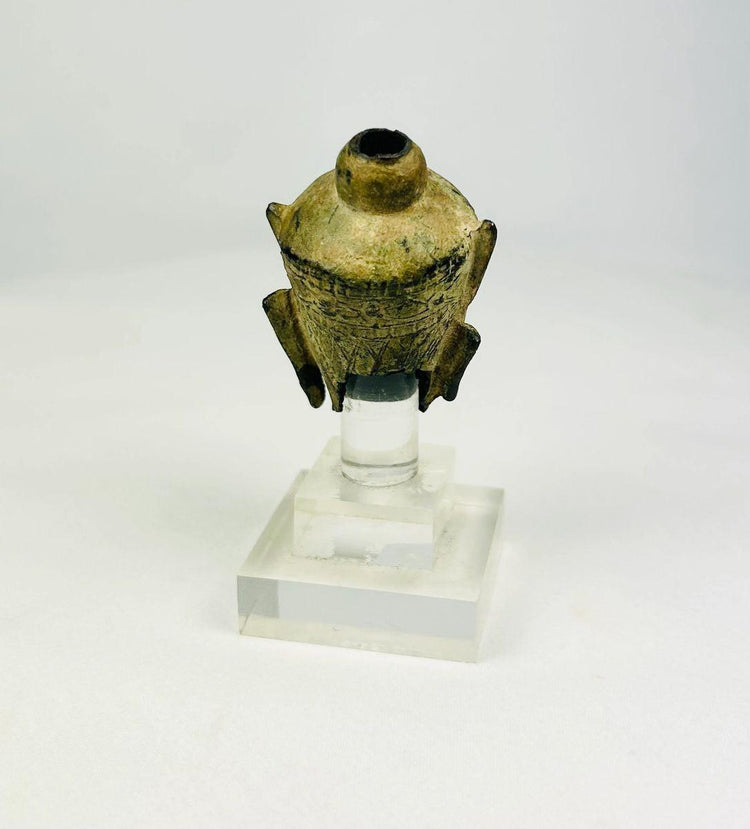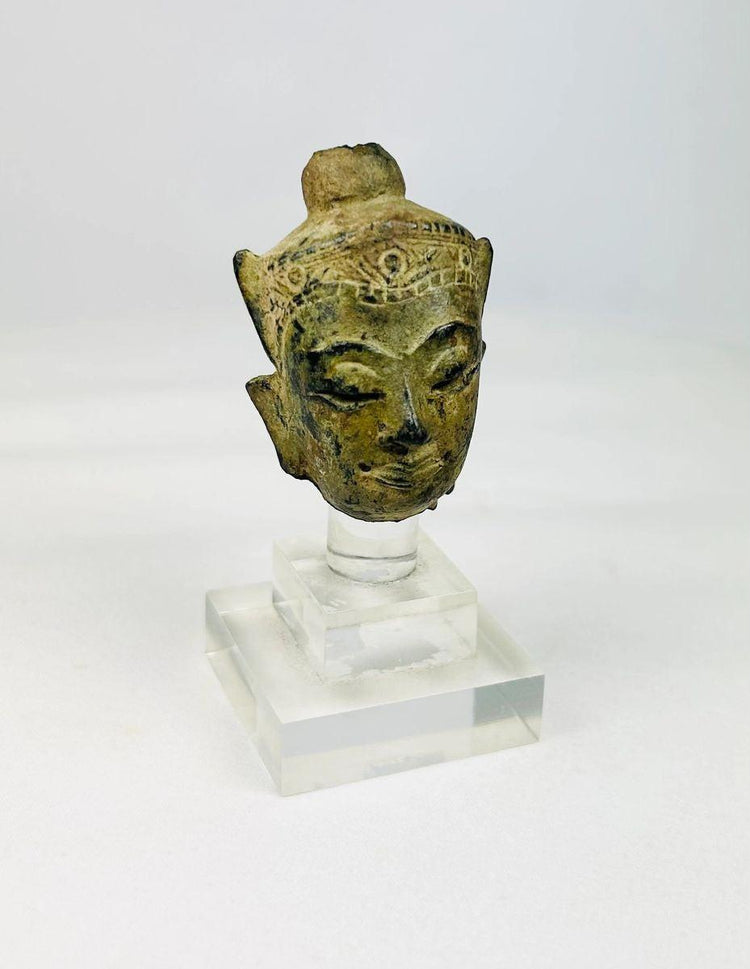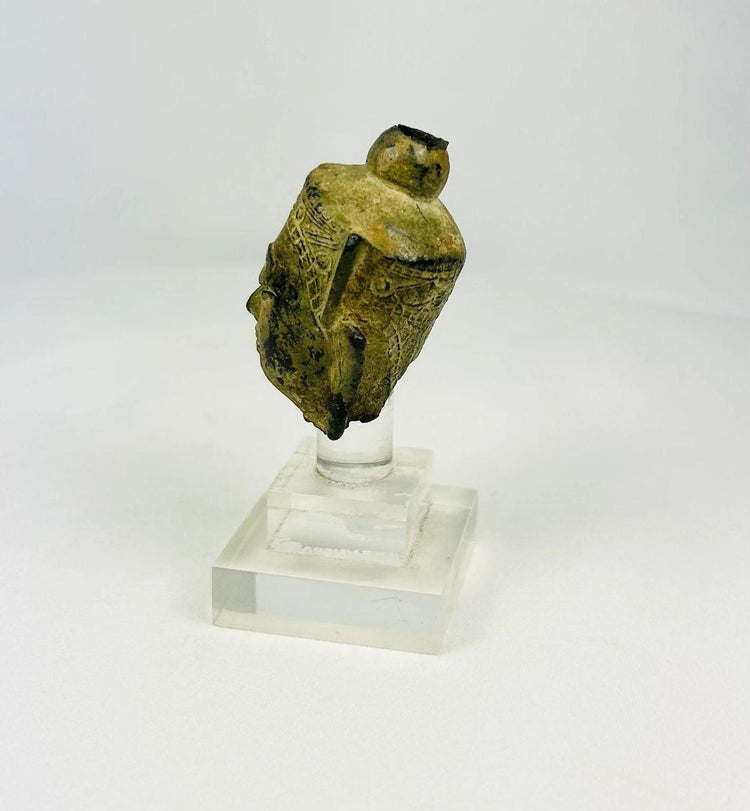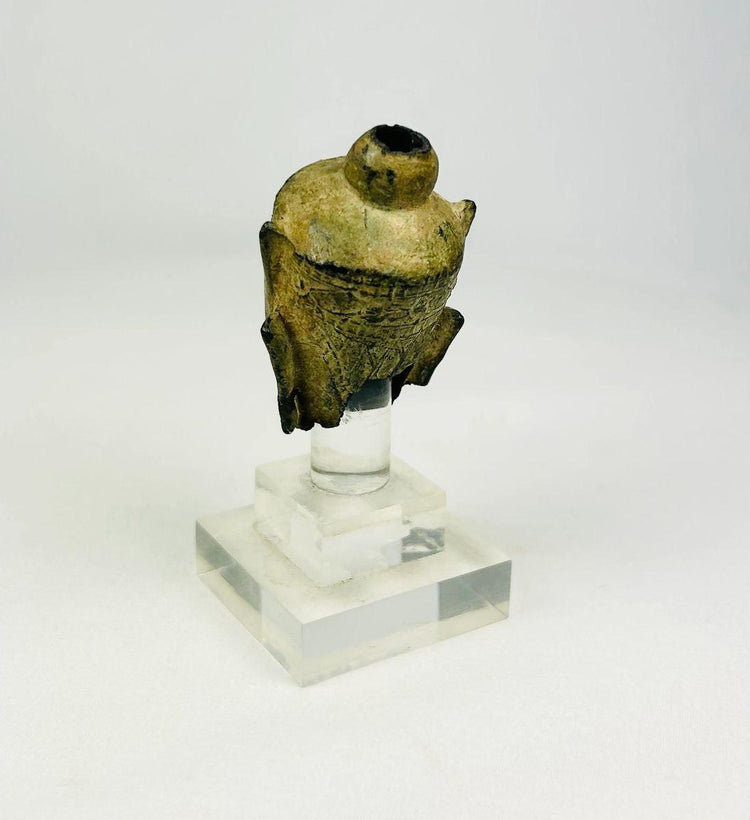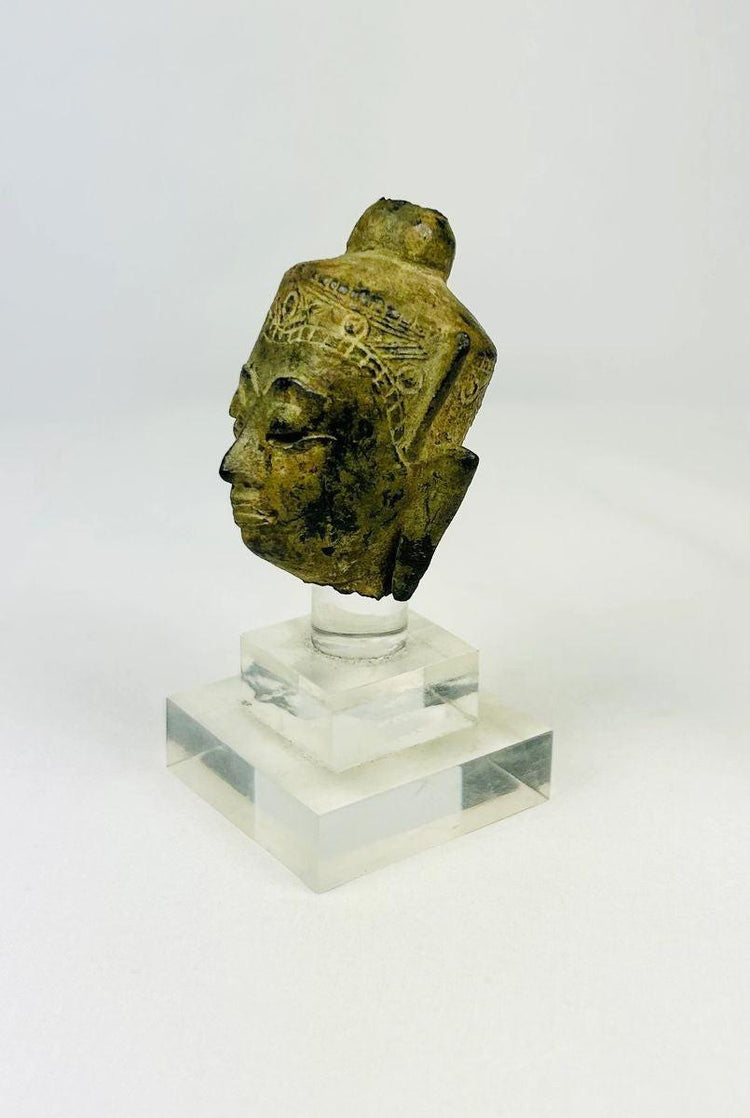Bronze Head of a Buddha Figure | Southeast Asia | Circa 15th–18th Century CE
Description
More
Less
Historical Context & Origin
Region: Likely Thailand or Burma (Myanmar)
Material: Cast bronze with traces of gilt and lacquer
Period: Late Ayutthaya to Early Rattanakosin Period (Thailand) or Toungoo–Konbaung Dynasty (Burma), circa 15th–18th Century CE
Description
This serene bronze head once belonged to a larger Buddha figure, likely created for temple devotion or household altar use. The face is finely modeled with arched brows, gently closed eyes, and a subtle smile that conveys spiritual calm and enlightenment. The ushnisha (cranial protuberance) and ornamental crown band suggest it represents a crowned or royal Buddha—an important Theravāda iconographic type. Incised decoration on the headdress, surviving traces of lacquer, and a rich green-brown patina testify to both its age and long ritual life.
Features
- Classical Southeast Asian Buddhist facial expression with meditative calm
- Engraved crown band with geometric and floral motifs
- Compact and display-ready on a custom acrylic stand
- Rich aged patina with traces of pigment and lacquer
Cultural Significance
Heads of this kind reflect Theravāda Buddhist devotion across Thailand, Burma, and Laos during the 15th–18th centuries. Many survive as fragments of once-larger sculptures that were damaged or dispersed through temple renovations, conflict, or relocation. They remain revered both as sacred remnants and as historically important works of Southeast Asian Buddhist art.
Condition
Fragmentary (head only). Surface wear, mineral accretion, and patina consistent with age and ritual exposure. No modern restorations noted.
Dimensions (approximate)
Height (with stand): 3 in
Width: 1.5 in
Depth: 1.5 in
Age
Circa 15th–18th Century CE (approximately 300–500 years old)
Description
Historical Context & Origin
Region: Likely Thailand or Burma (Myanmar)
Material: Cast bronze with traces of gilt and lacquer
Period: Late Ayutthaya to Early Rattanakosin Period (Thailand) or Toungoo–Konbaung Dynasty (Burma), circa 15th–18th Century CE
Description
This serene bronze head once belonged to a larger Buddha figure, likely created for temple devotion or household altar use. The face is finely modeled with arched brows, gently closed eyes, and a subtle smile that conveys spiritual calm and enlightenment. The ushnisha (cranial protuberance) and ornamental crown band suggest it represents a crowned or royal Buddha—an important Theravāda iconographic type. Incised decoration on the headdress, surviving traces of lacquer, and a rich green-brown patina testify to both its age and long ritual life.
Features
- Classical Southeast Asian Buddhist facial expression with meditative calm
- Engraved crown band with geometric and floral motifs
- Compact and display-ready on a custom acrylic stand
- Rich aged patina with traces of pigment and lacquer
Cultural Significance
Heads of this kind reflect Theravāda Buddhist devotion across Thailand, Burma, and Laos during the 15th–18th centuries. Many survive as fragments of once-larger sculptures that were damaged or dispersed through temple renovations, conflict, or relocation. They remain revered both as sacred remnants and as historically important works of Southeast Asian Buddhist art.
Condition
Fragmentary (head only). Surface wear, mineral accretion, and patina consistent with age and ritual exposure. No modern restorations noted.
Dimensions (approximate)
Height (with stand): 3 in
Width: 1.5 in
Depth: 1.5 in
Age
Circa 15th–18th Century CE (approximately 300–500 years old)
You May Also Like


























